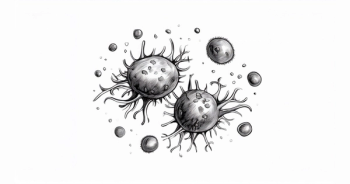
Higher MRD Threshold Could Guide Discontinuation of Myeloma Maintenance
Ben Derman, MD, discussed results from a trial investigating minimal residual disease–guided discontinuation of maintenance therapy in patients with multiple myeloma.
Ben Derman, MD, assistant professor of medicine at the University of Chicago Medical Center, discussed results from a trial investigating minimal residual disease (MRD)-guided discontinuation of maintenance therapy in patients with multiple myeloma.
The prospective MRD2STOP trial (NCT04108624) enrolled 38 patients who had complete responses to therapy and MRD negativity at the 10-6 threshold after 1 year of maintenance and permitted them to stop maintenance therapy. At 15 months follow-up, only 2 patients had progression, both of whom only had biochemical disease progression, and there were no deaths. Five patients had a resurgence of MRD positivity, including the 2 who progressed.
The study employed an exploratory 10-7 MRD threshold based on filtered CD138-positive cells, and 4 out of the 5 patients who lost MRD negativity at 10-6 after discontinuation had detectable disease at 10-7 before discontinuing therapy. Derman says this suggests that patients who have detectable disease at this higher threshold may be poor candidates for discontinuing therapy, whereas others appear to be able to safely discontinue their maintenance regimen with a lower risk of recurrence.
TRANSCRIPTION:
0:08 | We only have 15 months of follow-up so far on the study, but of the 38 patients who enrolled in discontinuation, we had 2 who had disease progression, 1 at 12 months, 1 at 18 months, and both were what we call biochemical progression. They didn't have bone disease, they didn't have new fractures, and these were patients that just had lab parameters showing progression. Fortunately, we've had 0 deaths. Of those 38 patients, just to come back to that, we had 5 patients who had MRD resurgence at 10-6, meaning they went from MRD negative to MRD positive at some point in this study. Only 2 of those 5 patients had disease progression, like I just mentioned.
What's interesting about this is the fact that 4 out of those 5 patients who had MRD resurgence were found to have detectable disease using our 10-7 assay…. That suggests that this 10-7 assay is not only feasible but may be able to tell us who should not actually discontinue, because if you have a detectable disease on that assay, it might be telling us that something is not right here. There's still some small amount of disease that we wouldn't have been able to detect using the 10-6 assay.








































